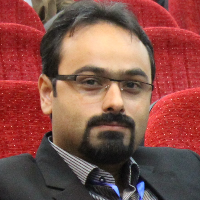A Discussion on the Issue of Distribution of Silk I3-5 Pottery in the Central Plateau of Iran: Household or Specialized Production?
Neolithic studies of the central plateau of Iran, especially based on technology and production organization of pottery, indicate the presence of household production organization among these societies. Raw materials, productions and tools, specialization levels, and exchanges all expose a household production organization and local trading. Also, technologies, manufacturing tools, variety of production, cultural interaction levels, and other characters reveal that Neolithic societies of the central plateau of Iran were small and simple communities and their products were only for their use. In this study, the authors have used and analyzed the data of important Neolithic sites of Central Plateau of Iran, including Sialk (Kashan plain), Chahar Boneh and EbrahimAbad (Qazvin plain) and Pardis and Cheshmeh Ali (Tehran plain); each of this sites has type of local pottery or potteries that indicate household production organization very well. But an exception occurs in this period in the region; common type pottery was present in almost all the region that is so-called Sialk I3-5 pottery. The distribution of this pottery, in the Late Neolithic II period, is inconsistent with what we definition of household production organization, exchanges goods, or technology in the Central Plateau of Iran. In this research, based on Ethnoarchaeology and the presence of full-time non-resident specialists (badgers), it is hypothesized that given that the presence of full-time professional experts requires a consumer community and may occur in densely populated settlements. Neolithic communities of Central Plateau of Iran, in the direction of specialization, can be considered as the first step of complex societies and the similarity of some artifacts such as the pottery, which is only discussed in this paper, due to the presence of specialists who are temporarily present in the settlement areas and provide their services. In this paper we step forward to known household industrial production based on Sialk I3-5 pottery.
-
New Evidence of the Pottery Neolithic in the Eastern Mazandaran Based on Recent Archaeological Field Survey
Seyyed Kamal Asadi Ojaei, Rahmat Abbasnejad Seresti *, Roger Matthews, Christopher P. Thornton
Iranian Archaeological Research Journal, Summer 2024 -
The beginning of urbanization, a factor for the spread of epidemic diseases and the decline of Middle Eastern civilizations in the second millennium B.C.
Farzaneh Ahdi Atigh, Mohammad Ghamari Fatide *
Journal of Iran Pre-Islamic Archaeological Essays, -
Investigating the Impact of Climatic Events on the Subsistence of Mesolithic and Neolithic Communities Around the Caspian Sea
Shakiba Rostamian Omran, Rahmat Abbasnejad Seresti *, Seyyed Kamal Asadi Ojaei
Iranian Archaeological Research Journal, -
The beginning of urbanization, a factor for the spread of epidemic diseases and the decline of Middle Eastern civilizations in the second millennium B.C.
Farzaneh Ahdi Atigh, Mohammad Ghamari Fatide *
Journal of Iran Pre-Islamic Archaeological Essays,




